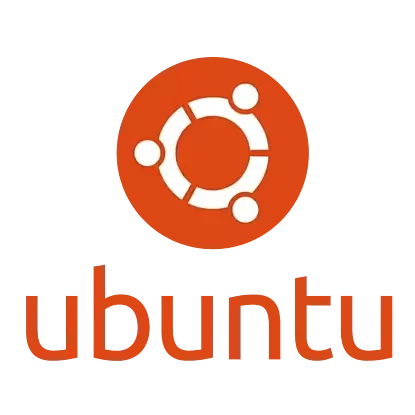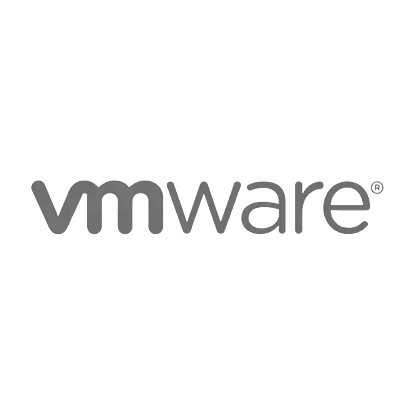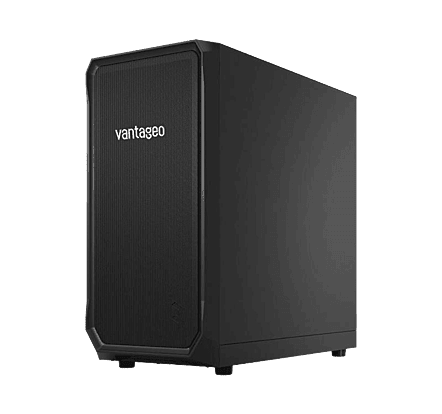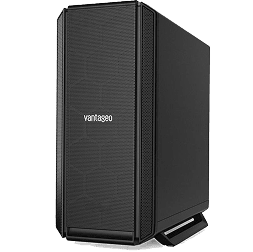"Vantageo Workstations – Power, Precision, Performance"
Built for professionals, Vantageo workstations offer high-speed processing, advanced graphics, and seamless multitasking. Equipped with Intel Xeon / AMD Ryzen processors, NVIDIA / AMD GPUs, and ultra-fast storage, they handle AI, 3D rendering, CAD, and data analytics with ease. Customizable, energy-efficient, and backed by robust after-sales support, Vantageo workstations deliver unmatched reliability and productivity. Engineered for creators, scientists, and innovators
AI & Machine Learning
Use Cases : Training Deep Learning Models: GPUs excel at handling parallel processing, making them ideal for training complex neural networks. High-performance GPUs can speed up the inference process, crucial for real-time applications. Natural Language Processing (NLP): Transformers and large language models (e.g., GPT-4, BERT) benefit significantly from GPU acceleration. |
CAD & Engineering Simulations
Use Cases : 3D Modeling & Rendering: GPUs accelerate rendering processes in software like Blender, Autodesk Maya, and SolidWorks. Finite Element Analysis (FEA): Faster simulation and processing of complex models for stress, fluid dynamics, and t hermal analysis. Computational Fluid Dynamics (CFD): High-resolution simulations of airflow, fluid interactions, etc., are faster with GPUs. |
Media & Entertainment
Use Cases : Video Editing & Post-Production: Accelerated rendering, encoding, and effects processing with software like Adobe Premiere Pro, DaVinci Resolve, etc. Visual Effects (VFX): Real-time rendering of complex visual effects and simulations (e.g., particle systems, physics-based animations). 3D Animation: Faster rendering and manipulation of high-poly models in tools like Houdini, Unreal Engine, and Unity. |
Scientific Research & High-Performance Computing
Use Cases : Bioinformatics: Genome sequencing, protein folding simulations, molecular modeling. Physics Simulations: Complex particle simulations, quantum mechanics calculations, etc. |
Financial Modeling & Quantitative Analysis
Use Cases : Risk Analysis & Algorithmic Trading: High-frequency trading algorithms benefit from GPU acceleration for real-time decision-making. Option Pricing Models: Complex Monte Carlo simulations can be expedited with GPUs. |
Autonomous Vehicles
Use Cases : Simulation & Training: Processing data from LIDAR, RADAR, and cameras for training AI models. Real-time Decision Making: Enhanced processing speed for onboard AI systems. |
Supported Operating Systems
It supports AMD EPYC™ 7003 processors and AMD EPYC™ 7002 series processors.It has 16xDIMM slots.It also has 8 hot-swap 2.5&3.5 Drive bays.it includes a high-performance NVIDIA GPU for enhanced graphics and processing power.
It is powered by dual 3rd Generation Intel® Xeon® Scalable processors and features 18 DDR4 ECC DIMM slots. It offers flexible storage options with front drive bays supporting up to 4 x 2.5” SAS/SATA (HDD/SSD) and up to 4 x 3.5” SAS/SATA (HDD/SSD)
It is equipped with dual 3rd Generation Intel® Xeon® Scalable processors. It includes 16 DDR4 ECC DIMM slots for memory expansion. For storage, it offers flexible front drive bays with support for up to 4 x 2.5” SAS/SATA (HDD/SSD) and up to 4 x 3.5” SAS/SATA (HDD/SSD)
It supports 2nd Gen Intel® Xeon® Scalable Processors, offering reliable performance with 8 DIMM slots for memory expansion, ideal for professional workloads.
It supports 5th Gen Intel® Xeon® and 4th Gen Intel® Xeon® processors. It has 16 DIMM slots. It also has 8x 3.5" hot-swap SATA3 drive bays. It includes a high-performance NVIDIA GPU for enhanced graphics and processing power.
It is powered by 2nd Gen Intel® Xeon® Scalable Processors or Intel® Xeon® Scalable Processors, and features 8 DIMM slots for memory expansion.
It supports Intel® Xeon® W-3400 with includes 16 DIMM slots, PCIe 4.0, and three 3.5” SATA3 drive bays, NVIDIA GPU ensuring high performance, expandability, and ample storage for demanding workloads.
It supports Intel® Socket LGA4677 for Xeon® W-3400 and W-2400 . It has 8 DIMM slots. It also has multiple drive bays for storage. It includes a high-performance NVIDIA GPU for enhanced graphics and processing power.
It supports 2nd Gen Intel® Xeon® processors. It has 16 DIMM slots. It also has multiple drive bays for storage. It includes a high-performance NVIDIA T1000 8G GPU for enhanced graphics and processing power.
It supports 2nd Gen Intel® Xeon® processors. It has multiple PCIe Gen.3 x8 and x16 slots for expandability. It has multiple drive bays . It includes a high-performance NVIDIA GPU for enhanced graphics and processing power
It supports Intel® Xeon® It has 8 DIMM slots, and includes 4x 3.5" SATA3 drive bays. It features a high-performance NVIDIA GPU for enhanced graphics and processing power
It supports Intel® Xeon® W-3400 processors. It has 8 DIMM slots. It also has multiple drive bays for storage. It includes a high-performance NVIDIA GPU for enhanced graphics and processing power
AI & Machine Learning
Use Cases : Training Deep Learning Models: GPUs excel at handling parallel processing, making them ideal for training complex neural networks. Inference and Deployment: High-performance GPUs can speed up the inference process, crucial for real-time applications. Natural Language Processing (NLP): Transformers and large language models (e.g., GPT-4, BERT) benefit significantly from GPU acceleration. |
CAD & Engineering Simulations
Use Cases : 3D Modeling & Rendering: GPUs accelerate rendering processes in software like Blender, Autodesk Maya, and SolidWorks. Finite Element Analysis (FEA): Faster simulation and processing of complex models for stress, fluid dynamics, and t hermal analysis. Computational Fluid Dynamics (CFD): High-resolution simulations of airflow, fluid interactions, etc., are faster with GPUs. |
Media & Entertainment
Use Cases : Video Editing & Post-Production: Accelerated rendering, encoding, and effects processing with software like Adobe Premiere Pro, DaVinci Resolve, etc. Visual Effects (VFX): Real-time rendering of complex visual effects and simulations (e.g., particle systems, physics-based animations). 3D Animation: Faster rendering and manipulation of high-poly models in tools like Houdini, Unreal Engine, and Unity. |
Scientific Research & High-Performance Computing
Use Cases : Bioinformatics: Genome sequencing, protein folding simulations, molecular modeling. Physics Simulations: Complex particle simulations, quantum mechanics calculations, etc. |
Financial Modeling & Quantitative Analysis
Use Cases : Risk Analysis & Algorithmic Trading: High-frequency trading algorithms benefit from GPU acceleration for real-time decision-making. Option Pricing Models: Complex Monte Carlo simulations can be expedited with GPUs. |
Autonomous Vehicles
Use Cases : Simulation & Training: Processing data from LIDAR, RADAR, and cameras for training AI models. Real-time Decision Making: Enhanced processing speed for onboard AI systems. |
Supported Operating Systems
It supports AMD EPYC™ 7003 processors and AMD EPYC™ 7002 series processors.It has 16xDIMM slots.It also has 8 hot-swap 2.5&3.5 Drive bays.it includes a high-performance NVIDIA GPU for enhanced graphics and processing power.
It is powered by dual 3rd Generation Intel® Xeon® Scalable processors and features 18 DDR4 ECC DIMM slots. It offers flexible storage options with front drive bays supporting up to 4 x 2.5” SAS/SATA (HDD/SSD) and up to 4 x 3.5” SAS/SATA (HDD/SSD)
It is equipped with dual 3rd Generation Intel® Xeon® Scalable processors. It includes 16 DDR4 ECC DIMM slots for memory expansion. For storage, it offers flexible front drive bays with support for up to 4 x 2.5” SAS/SATA (HDD/SSD) and up to 4 x 3.5” SAS/SATA (HDD/SSD)
It supports 2nd Gen Intel® Xeon® Scalable Processors, offering reliable performance with 8 DIMM slots for memory expansion, ideal for professional workloads.
It supports 5th Gen Intel® Xeon® and 4th Gen Intel® Xeon® processors. It has 16 DIMM slots. It also has 8x 3.5" hot-swap SATA3 drive bays. It includes a high-performance NVIDIA GPU for enhanced graphics and processing power.
It is powered by 2nd Gen Intel® Xeon® Scalable Processors or Intel® Xeon® Scalable Processors, and features 8 DIMM slots for memory expansion.
It supports Intel® Xeon® W-3400 with includes 16 DIMM slots, PCIe 4.0, and three 3.5” SATA3 drive bays, NVIDIA GPU ensuring high performance, expandability, and ample storage for demanding workloads.
It supports Intel® Socket LGA4677 for Xeon® W-3400 and W-2400 . It has 8 DIMM slots. It also has multiple drive bays for storage. It includes a high-performance NVIDIA GPU for enhanced graphics and processing power.
It supports 2nd Gen Intel® Xeon® processors. It has 16 DIMM slots. It also has multiple drive bays for storage. It includes a high-performance NVIDIA T1000 8G GPU for enhanced graphics and processing power.
It supports 2nd Gen Intel® Xeon® processors. It has multiple PCIe Gen.3 x8 and x16 slots for expandability. It has multiple drive bays . It includes a high-performance NVIDIA GPU for enhanced graphics and processing power
It supports Intel® Xeon® It has 8 DIMM slots, and includes 4x 3.5" SATA3 drive bays. It features a high-performance NVIDIA GPU for enhanced graphics and processing power
It supports Intel® Xeon® W-3400 processors. It has 8 DIMM slots. It also has multiple drive bays for storage. It includes a high-performance NVIDIA GPU for enhanced graphics and processing power










